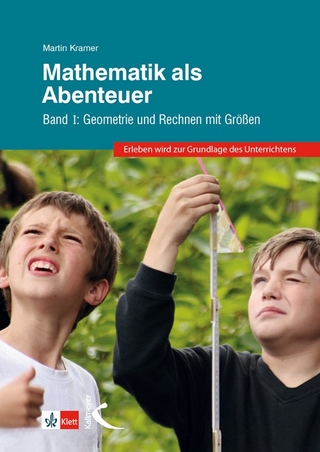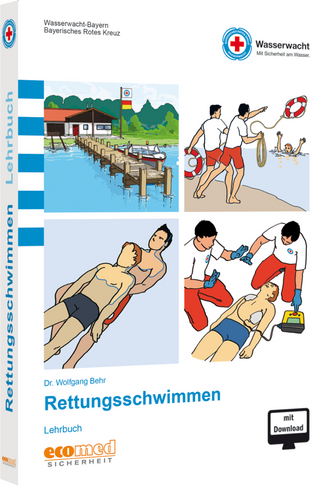
Principles of Applied Clinical Chemistry
Kluwer Academic/Plenum Publishers (Verlag)
978-0-306-40276-0 (ISBN)
- Titel ist leider vergriffen;
keine Neuauflage - Artikel merken
The immunoglobulins are not included in this study since, along with complement and clotting factors, they form an integrated system concerned with defense against invading organisms. These will be discussed in Volume 4 of this series. A historical introduction (Chapter I) is followed by a general presentation of the composition and properties of proteins (Chapter 2).
A Plasma Protein Properties and Metabolism.- Section I. Nature of the Plasma Proteins.- 1 Introduction.- 1.1 Historical Background.- 1.2 Selected Reading.- 1.3 References.- 2 Protein Composition and Properties.- 2.1 Chemical Composition of Proteins.- 2.2 Primary, Secondary, Tertiary, and Quaternary Structure.- 2.3 Proteins in Solution.- 2.4 Recapitulation.- 2.5 Selected Reading.- 3 Plasma Protein Survey.- 3.1 Classification.- 3.2 Protein Fractionation.- 3.2.1 The Serum Electrophoretic Pattern.- 3.2.2 Moving-Boundary Electrophoresis.- 3.2.3 Zone Electrophoresis.- 3.2.4 The Ultracentrifuge.- 3.3 References.- Section II. Plasma Protein Metabolism.- 4 Albumin in Nutrition and Transport.- 4.1 Physical and Chemical Properties of Albumin.- 4.2 Microheterogeneity of Serum Albumin.- 4.3 Normal Distribution and Origin.- 4.4 Albumin Function in the Healthy Human.- 4.4.1 Albumin as a Transport Protein.- 4.4.2 Albumin in Nutrition and Osmotic Regulation.- 4.4.2.1 Hormonal Effects on Albumin Synthesis.- 4.4.2.2 Albumin in Cell Nutrition.- 4.5 Albumin Variants.- 4.5.1 Bisalbuminemia.- 4.5.2 Analbuminemia.- 4.6 Serum Albumin Changes in Disease.- 4.7 I.V. Albumin Therapy.- 4.8 Serum Albumin Assay.- 4.9 Recapitulation.- 4.10 Selected Reading.- 4.11 References.- 5 Glycoproteins and Proteoglycans.- 5.1 Isolation of the Plasma Glycoproteins.- 5.2 The Nature of the Carbohydrate Protein Linkage.- 5.3 Studies of the Structure of the Heterosaccharides.- 5.4 Heterosaccharide Synthesis.- 5.5 Glycoprotein Heterosaccharide Structure.- 5.5.1 Heterosaccharide Structure of the Blood Group Glycoproteins.- 5.5.2 Mucin Heterosaccharides.- 5.5.3 Collagen Heterosaccharides.- 5.6 Function of the Oligosaccharides of Glycoproteins.- 5.7 Acute-Phase Reactants.- 5.7.1 C-Reactive Protein.- 5.7.2 ?l Acid Glycoprotein.- 5.7.3 Low-Concentration Acute-Phase Glycoproteins.- 5.7.3.1 Pregnancy-Associated Glycoprotein.- 5.7.3.2 Zinc-?2 Glycoprotein.- 5.7.3.3 Seromucoid Proteins.- 5.8 Glycoprotein Catabolism.- 5.8.1 Abnormal Glycoprotein Catabolism.- 5.8.2 Mannosidosis.- 5.8.3 Fucosidosis.- 5.9 Glycosaminoglycans: The Mucopolysaccharides.- 5.10 Genetic Glycosaminoglycan Storage Diseases.- 5.10.1 Hurler's Syndrome (Type I H).- 5.10.2 Scheie's Syndrome (Type I S).- 5.10.3 Hunter's Syndrome (Type II).- 5.10.4 Sanfilippo Syndromes A and B (Type III).- 5.10.5 Morquio's Syndrome (Type IV).- 5.10.6 Maroteaux-Lamy Syndrome (Type VI).- 5.10.7 Sly Syndrome: ?-Glucuronidase Deficiency (Type VII).- 5.10.8 Glycosaminoglycan Lysosomal Storage Diseases.- 5.10.8.1 Aspartylglucosaminuria.- 5.10.8.2 The Mucolipidoses (ML): Neuraminidase Deficiency.- 5.11 Proteoglycans.- 5.11.1 Proteoglycan Aggregates.- 5.11.2 Proteoglycan Synthesis.- 5.11.3 Function of Proteoglycans in Health and Disease.- 5.12 Recapitulation.- 5.13 Selected Reading.- 5.14 References.- 6 Lipoproteins in Nutrition and Transport.- 6.1 Plasma Lipids: Composition.- 6.1.1 Serum Cholesterol.- 6.1.2 Plasma Free Fatty Acids.- 6.1.3 Neutral Plasma Glycerides.- 6.1.4 Phospholipids.- 6.2 Lipoproteins.- 6.2.1 The Major Lipoprotein Groups.- 6.2.2 Composition of the Lipoprotein Classes.- 6.2.3 The Apolipoproteins.- 6.2.3.1 Apolipoprotein A (apoA).- 6.2.3.2 Apolipoprotein B (apoB).- 6.2.3.3 Apolipoprotein C (apoC).- 6.2.3.4 Apolipoprotein D (apoD).- 6.2.3.5 Apolipoprotein E (apoE).- 6.2.3.6 Minor Apolipoproteins.- 6.3 Lipoprotein Formation.- 6.4 Normal Lipoprotein Metabolism.- 6.5 Abnormal Lipoprotein Metabolism.- 6.5.1 Genetic Defects in the Plasma Lipoproteins.- 6.5.2 Hypo- and A-?-lipoproteinemia.- 6.5.3 Hypo-?-lipoproteinemia, Tangier Disease.- 6.5.4 The Hyperlipoproteinemias.- 6.5.4.1 Familial Fat-Induced Hyperlipemia (Type I).- 6.5.4.2 Familial Hyper-?-lipoproteinemia (Type II).- 6.5.4.3 Mutations Affecting LDL Metabolism.- 6.5.4.4 Dys-?-lipoproteinemia, Broad-? Disease (Type III).- 6.5.4.5 Hyper-pre-?-lipoproteinemia (Type IV).- 6.5.4.6 Familial Mixed Hypertriglyceridemia, Type V Disease.- 6.5.4.7 The Hyperlipoproteinemia Types: Summary.- 6.5.5 Familial Lecithin-Cholesterol Acyltransferase (LCAT) Deficiency.- 6.6 Acquired Hyperlipemias.- 6.7 High-Density Lipoprotein; Hyper-?-lipoproteinemia.- 6.8 Hyperlipemia and Nutrition.- 6.9 Hypolipidemic Drugs.- 6.10 Lipid and Lipoprotein Assay.- 6.11 Recapitulation.- 6.12 Selected Reading.- 6.13 References.- B Plasma Proteins in Transport of Intermediates, Minerals, and Hormones.- Section III. Plasma Transport Proteins.- 7 Transferrin: Iron Metabolism.- 7.1 Transport Proteins.- 7.2 Transferrin.- 7.2.1 Transferrin Variants.- 7.2.2 Transferrin Function.- 7.2.3 Transferrin and Iron Metabolism.- 7.3 Ferritin and Iron Storage.- 7.4 Aberrant Iron Metabolism.- 7.4.1 Increased Iron Losses due to Hemorrhage.- 7.4.2 Inadequate Iron Intake and Nutrition.- 7.4.3 Defective Iron Reutilization.- 7.4.4 Congenital Atransferrinemia.- 7.4.5 Iron Overload.- 7.4.6 Hemochromatosis.- 7.4.7 Iron-Loading Anemias.- 7.4.8 Laboratory Findings with Aberrant Iron Metabolism.- 7.5 Management of the Patient with Abnormal Iron Metabolism.- 7.6 Assay for Transferrin and Iron.- 7.7 Recapitulation.- 7.8 Selected Reading.- 7.9 References.- 8 Ceruloplasmin: Copper Metabolism.- 8.1 Ceruloplasmin.- 8.2 Ceruloplasmin Copper.- 8.3 Preparation of Ceruloplasmin.- 8.4 Nature of the Ceruloplasmin Chain.- 8.5 Genetic Variants.- 8.6 Ceruloplasmin Function and the Tissue Oxidases.- 8.7 Ceruloplasmin and Copper in Disease.- 8.7.1 Copper Deficiency and Ceruloplasmin.- 8.7.2 Normal Copper Content in the Human.- 8.7.3 Copper Overload.- 8.7.4 Ceruloplasmin, Copper, and Liver Disease.- 8.7.5 Wilson's Disease.- 8.7.6 Management of the Patient with Aberrant Copper Metabolism.- 8.8 Ceruloplasmin and Copper Assay.- 8.9 Recapitulation.- 8.10 Selected Reading.- 8.11 References.- 9 Haptoglobins: Hemoglobin Binding.- 9.1 Survey.- 9.2 Haptoglobin Composition.- 9.3 Haptoglobin Electrophoresis.- 9.4 Gene Frequency of the Haptoglobins.- 9.5 The Haptoglobin Chains.- 9.5.1 Haptoglobin ? Chains.- 9.5.2 Haptoglobin ? Chains.- 9.6 Haptoglobin Carbohydrate.- 9.7 Hemoglobin Binding to Haptoglobin.- 9.8 Haptoglobin Variants.- 9.9 Quantitative Haptoglobin Variants.- 9.10 Anhaptoglobinemia.- 9.11 Serum Haptoglobin Concentration.- 9.12 Haptoglobin Function.- 9.13 Medical Applications.- 9.14 Haptoglobin Assay.- 9.15 Recapitulation.- 9.16 Selected Reading.- 9.17 References.- 10 Hemopexin: Iron Recycling.- 10.1 Hemopexin (? Haptoglobin).- 10.2 Hemopexin Composition.- 10.3 Heme Binding to Hemopexin.- 10.4 Hemopexin Function.- 10.5 Serum Hemopexin.- 10.6 Hemopexin in Iron Reutilization.- 10.7 Serum Hemopexin in Disease.- 10.8 Hemopexin Preparation.- 10.9 Hemopexin Assay.- 10.10 Recapitulation.- 10.11 Selected Reading.- 10.12 References.- 11 Prealbumin I: Iodothyronine-Binding Proteins.- 11.1 Prealbumin.- 11.2 Thyroxine-Binding Proteins.- 11.3 Thyroxine-Binding Prealbumin (TBPA).- 11.4 Thyroxine-Binding Globulin (TBG).- 11.5 Plasma Thyroxine-Binding Proteins and Thyroid Function.- 11.6 Assay for Thyroid Function.- 11.7 Abnormal Serum TBG Levels.- 11.8 Recapitulation.- 11.9 Selected Reading.- 11.10 References.- 12 Prealbumin II: Vitamin A(Retinol)-Binding Protein.- 12.1 Retinol-Binding Protein.- 12.2 Retinol-Binding Protein and Vitamin A Transport.- 12.3 Retinol-Binding Protein in Disease.- 12.4 Retinol and Vision.- 12.5 Recapitulation.- 12.6 Selected Reading.- 12.7 References.- 13 Vitamin D Transport: Gc Globulins.- 13.1 Vitamin D and Hydroxy-Vitamin D.- 13.2 Group-Specific Component of Plasma, Gc Globulin.- 13.3 Gc Globulin Variants.- 13.4 Vitamin-D-Binding Protein and Disease.- 13.5 Recapitulation.- 13.6 Selected Reading.- 13.7 References.- 14 Steroid Hormone-Binding Proteins.- 14.1 Corticosteroid-Binding Globulin (CBG): Transcortin.- 14.2 Steroid Binding to Transcortin.- 14.3 Plasma Transcortin.- 14.4 Transcortin Plasma Concentration in Disease.- 14.5 Transcortin Function.- 14.6 Transcortin Assay.- 14.7 Recapitulation: Transcortin (CBG).- 14.8 Testosterone-Binding Globulin (TeBG).- 14.9 Characteristics of TeBG.- 14.10 Steroid Binding to TeBG.- 14.11 Plasma TeBG.- 14.11.1 Depressed Plasma TeBG Levels.- 14.11.2 Elevated TeBG Binding Capacity.- 14.12 Further Steroid Hormone-Binding Globulin Problems.- 14.13 Recapitulation: Testosterone-Binding Globulin.- 14.14 Selected Reading.- 14.15 References.- 15 Transcobalamins: Vitamin B12 Transport.- 15.1 Plasma Transcobalamins.- 15.2 Properties of the Transcobalamins.- 15.3 Transcobalamin Function.- 15.4 The Transcobalamins in Disease.- 15.5 Recapitulation.- 15.6 Selected Reading.- 15.7 References.- Section IV. Appendix.- A.1 Steroid Nomenclature.- A.1.1 Progesterone and the Corticosteroids.- A.1.2 The Steroid Sex Hormones.- A.1.3 The Bile Acids.- A.2 Mechanism of Cholesterol Formation.- A.3 Neutral and Phosphorylated Glyceride Structures.- A.3.1 Diglyceride Pathway for Glyceride Synthesis.- A.3.2 Monoglyceride Pathway for Glyceride Synthesis.- A.4 Nature of the Lipases.- A.4.1 Pancreatic Lipase.- A.4.2 Lipoprotein Lipase.- A.4.3 Hormone-Sensitive Lipase (HSL).- A.4.4 Other Tissue Lipases.- A.4.5 Phospholipases.- A.4.5.3 Lysophospholipase.- A.4.5.4 Phospholipase B.- A.4.5.5 Phospholipase C.- A.4.5.6 Phospholipase D.- A.5 Protein Parameters.- A.5.1 Absorptivity of the Plasma Proteins.- A.5.2 Partial Specific Volume of Proteins.- A.5.3 Viscosity and Frictional Resistance of Protein Molecules.- A.5.4 Plasma Protein Diffusion Coefficient.- A.5.5 Osmotic Pressure and Molecular Weight of Proteins.- A.5.6 Molecular Weight of Proteins by Diffusion.- A.5.7 Molecular Weight of Proteins by Sedimentation in the Ultracentrifuge.- A.5.8 Electrophoretic Mobility.- A.5.9 Selected Reading.
| Erscheint lt. Verlag | 1.8.1980 |
|---|---|
| Zusatzinfo | 78 black & white illustrations, biography |
| Sprache | englisch |
| Themenwelt | Schulbuch / Wörterbuch |
| ISBN-10 | 0-306-40276-9 / 0306402769 |
| ISBN-13 | 978-0-306-40276-0 / 9780306402760 |
| Zustand | Neuware |
| Haben Sie eine Frage zum Produkt? |
aus dem Bereich


